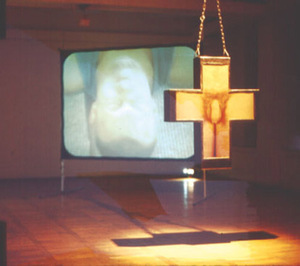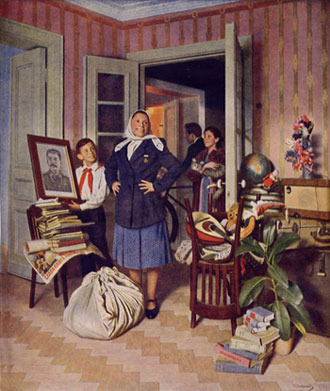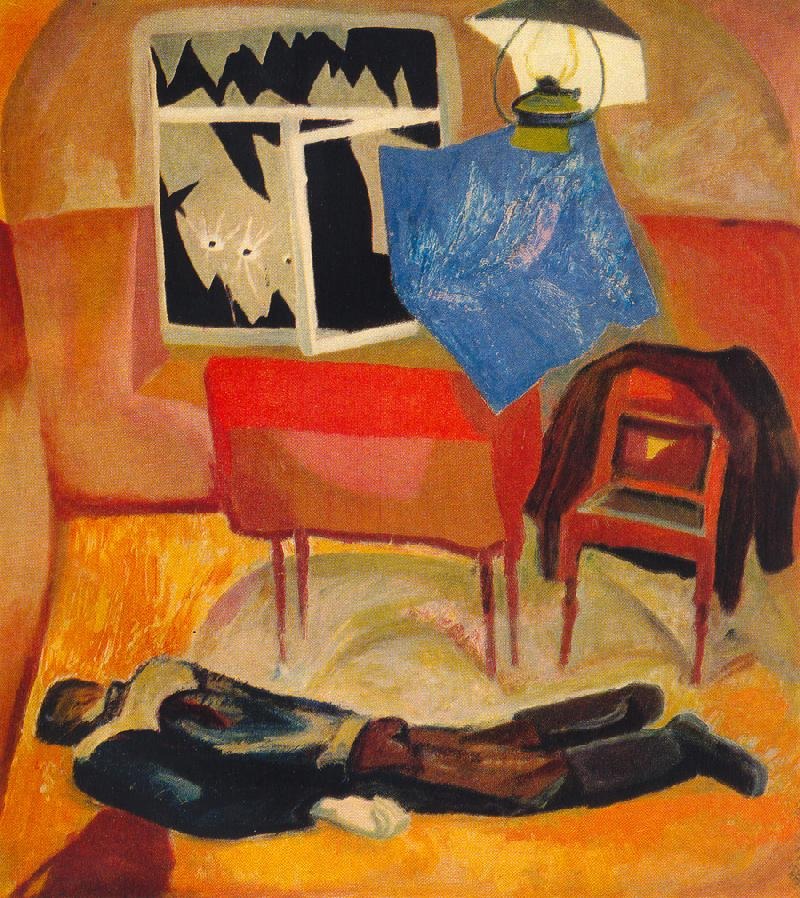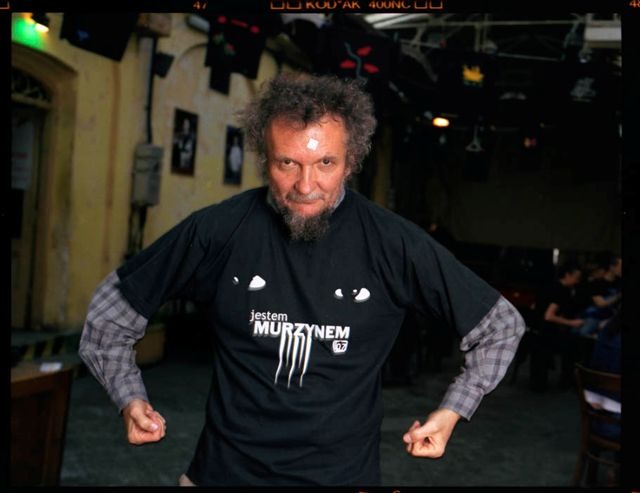ART AND POLITICS: SCIENTIFIC ATTITUDE 0
(International conference “Art and Politics: Case-studies of Eastern Europe”) Kotryna Džilavjanaitėwww.kamane.lt, 2006 11 02 D.Nieznalska, "Passion", 2001
Aleksandras Laktionovas, "To a New Flat", 1952
Silvestras Džiaukštas, "Death of an Activist", 1969
Action "T-shirt for Freedom", 2004. Former vice-champion of Olympic biathlon Tomasz Sikora wears T-shirt with a note "I am black". In brief: The belief that scientific conferences may be attractive and useful only to a small circle of theoreticians does not always appear to be true. The content of the conference organised at the Art Institute of Vytautas Magnus University on October 26-27 could interest not only professional art critics and students but also other educated members of the society. The international conference was dedicated for the analysis of art and politics issues in the Eastern European countries. Many interesting reports were read, which made one wonder, doubt or agree. The rather narrow (post)Soviet focus of the conference was grounded – the listeners could get acquainted with many-sided researches of scientists from many countries concentrated on a particular discourse. Up till now the art of the Soviet period or Stalin period was reviewed rather episodically. Social realism art has not been fully condemned or rehabilitated in Lithuania, its examples are still gathering dust in museum funds (Meanwhile, artworks of social realism are included into the constant exposition of the National Gallery in Czech). The conference was started by Vojtech Lahoda, a Czech professor of art, who gave lectures to VMU students two years ago. He analysed the role of an artist as a politician presenting an example of Pablo Picasso, one of the most contradictory personalities of art of the 20th century. The report of Linara Dovydaitytė took the audience to more recent times – she spoke about expression in the Lithuanian painting of 7th century. The art critic noted that the wave of expression was applied for principles of propaganda inevitably. This is revealed by the works of Leonas Surgailis “1917” and Silvestras Džiaukštas “Death of an Activist”, the form of which is freer, bolder but the content is still politically agitating. Reports on sociological themes were delivered by Oliver Johnson (England), also by Izabela Kowalczyk, who made a research on art and tolerance in Poland. One more interesting example of the society analysis was presented by Prof. Egidijus Aleksandravičius, who read a report about the fate of Aesop’s language in the post-Soviet Lithuania. During the soviet times Aesop’s language formed as a tool enabling to survive and resist. Lecturers spoke in two different halls at the same time; therefore, it was not possible to hear all the reports included into the programme. Still, they should be printed in the publication of the conference (about 30 reports in total). The conference may be evaluated as an exceptional and important – it will have a real benefit for the Lithuanian art researchers’ work reviewing the heritage of Soviet art, the connection of politics and art earlier and now. The topics introduced during the event may serve to educate people evaluating art and have an impact on the formation of a more open society.




